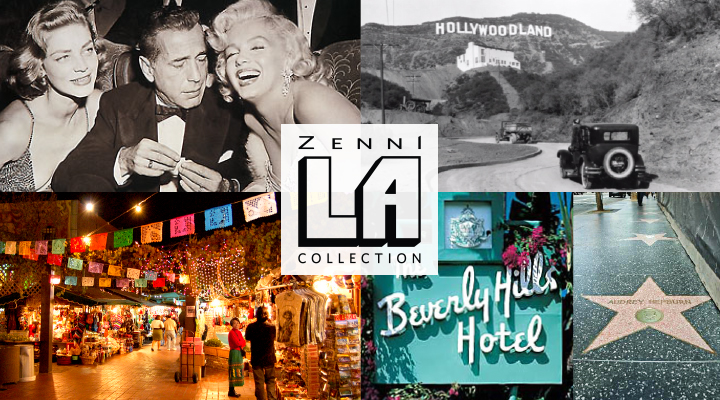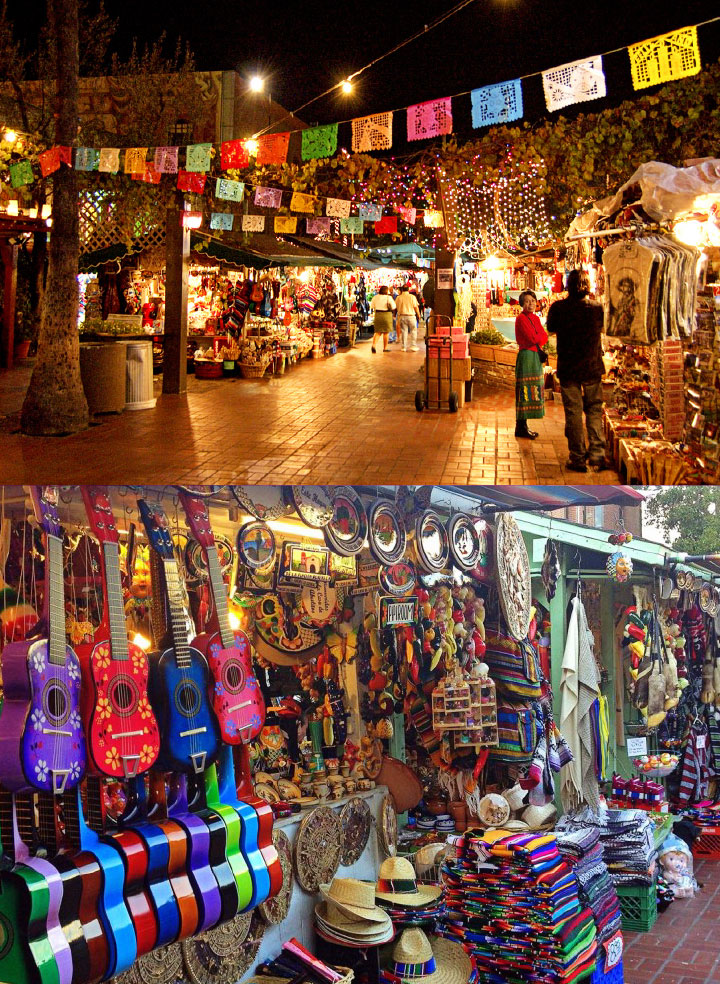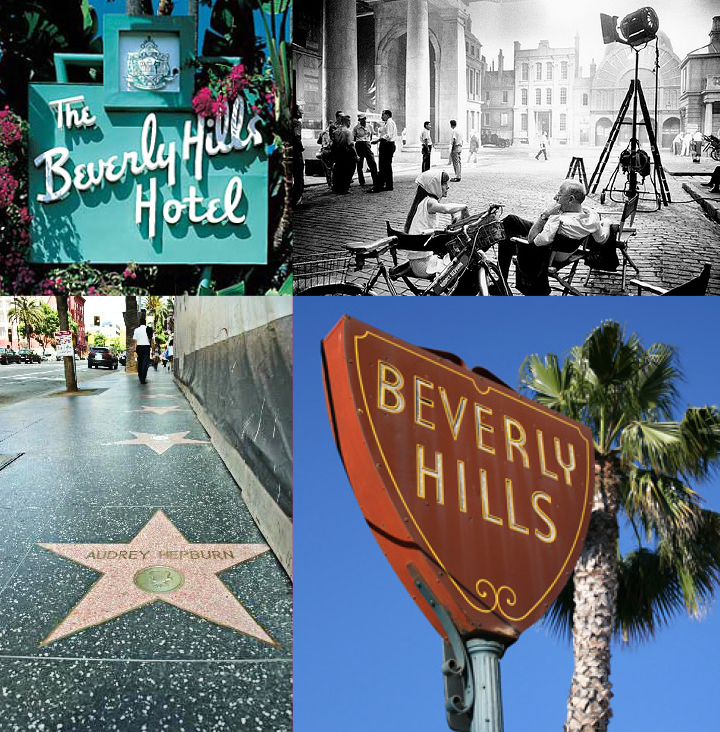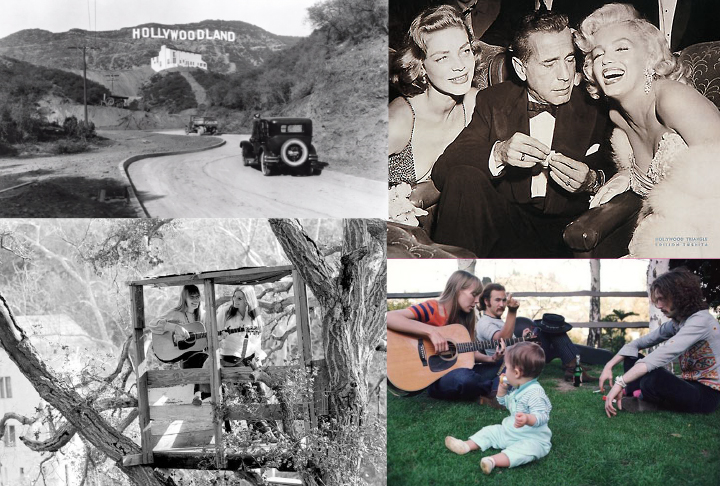A Tour of LA’s Colorful Past Inspires an Eyewear Collection

Los Angeles is a sprawling metropolis with a personality uniquely its own. The paint that literally covers vintage buildings and signs gives LA the feeling of being a constant work in progress. It’s continually pushing forward, but the past in never far behind.
LA’s rich, colorful past was the inspiration for our latest eyewear collection: The Zenni LA Collection. Time travel with us to the eras and areas that helped shape the City of Angels.
CALLE OLVERA
To really step back in time, start your tour with a visit to Olvera Street. This small yet vibrant street is the birthplace of Los Angeles. In 1781, during the Spanish colonization of California, a village called—take a deep breath– El Pueblo de Nuestra Señora la Reina de los Ángeles (The Town of Our Lady the Queen of the Angels) was established by 11 families on the site where Olvera Street is today. By the 1870s, Los Angeles was still only a village with about 5,000 inhabitants, but the westward railroad expansion would soon change that. By the 20th century, LA had grown to a whopping 100,000 residents and was well on its way to becoming the American metropolis we know today.

Today, Olvera Street is full of colorful kiosks and Mexican kitsch. You can stroll the little paseo and pretend you’re in Mexico—even if it’s the touristy side of Mexico. Amid the Hispanic splendor are several historic buildings worth noting. Avila Adobe, the oldest existing residence in LA is open daily. Step inside this museum to see how prominent rancheros lived in the early 1800s. For architecture enthusiasts, there’s Pico House and Sepulveda House. Pico House, a three-story Italianate structure that was built in the late 1800s, was once the swankiest luxury hotel in Southern California. Today, it hosts art exhibits and special events. Located on Olvera Street, Sepulveda House was built by the Sepulveda family, prominent residents of early Los Angeles, in the 1880s. The building is noteworthy for its Eastlake design, a movement created by architect Charles Eastlake that was similar to the Queen Anne style of Victorian architecture with Gothic and Old English elements.
If you’re feeling peckish, head over to Cielito Lindo for some taquitos. What? You heard that right: taquitos. Fuel up on an order of taquitos with their famous avocado sauce, wash it down with some horchata, and then make your way to Hollywood.
Hooray for Hollywood
Hollywood plays a key role in LA’s past and present. Before it became the epicenter for entertainment, Hollywood was once just a small agricultural outpost. As moving pictures grew in popularity in the early part of the 20th century, budding filmmakers on the East Coast felt stifled by Thomas Edison’s Moving Picture Patents Company (MPPC). To get as far away as possible from the MPPC’s restrictions, independent filmmakers headed west and set up shop in Hollywood. During the 1920s, all the major studios in Hollywood including MGM, Paramount, RKO and Warner Brothers were established, putting LA firmly on the map. The movie studios gave birth to another new phenomenon: the movie star. Many stars have left their mark on one of the city’s biggest icons: the Hollywood Walk of Fame. Take a stroll along this star-studded sidewalk which runs along Hollywood Boulevard and Vine Street. To get a feel for studio life, pop over to Paramount Pictures on Melrose for a tour. When you drive through the studio’s arched entrance, pretend you’re the Next Big Thing showing up for your first picture.

From Hollywood, make your way to Beverly. Hills, that is. This posh enclave, which is still a favorite of celebrities, became THE place for stars to live.
Douglas Fairbanks and Mary Pickford were the first of Hollywood’s glitterati to move in around 1919, followed by the likes of Buster Keaton and Rudolph Valentino. To get a taste of what it was like to live in a palatial Beverly Hills pad during the Golden Age of Hollywood, visit the Historic Doheny Greystone Estate. Built in 1928, this 46,000 square foot mansion has been featured in many films including “The Big Lebowski,” “X-Men,” and “The Social Network,” to name a few. The manse and its gardens are open to the public.
By the 1940s and 1950s, a second wave of Hollywood heavy-hitters began taking over the neighborhood. Some of the more famous residents in those days included Frank Sinatra, Fred Astaire, Lucille Ball, Jack Benny, and Bing Crosby.
The Beverly Hills Hotel, known as the Pink Palace, is still a great spot to get your glam on and have a bite. This landmark has always been a hot spot for Hollywood’s elite. Back in the day, you might have caught a glimpse of Marilyn Monroe—one of the hotel’s more famous bungalow residents. Today, you might spot a Kardashian. It is said that Elizabeth Taylor honeymooned in the bungalows six times out of her eight marriages! It’s worth the splurge on lunch in the Cabana Café or an elegant dinner in the Polo Lounge for the chance at an A-list celeb sighting.
HEAD FOR THE HILLS
In the 1960s, a new scene was taking root in LA. The Sunset Strip was ground zero for an emerging music scene that included bands and singers like The Byrds, The Mamas & The Papas, Buffalo Springfield, The Doors, Joni Mitchell, and Crosby, Stills, Nash & Young.

The Strip was where they played for crowds at venues like the Whiskey a Go Go, but they retreated to Laurel Canyon to chill out, commune, and create.
It’s easy to understand why anyone would want to live in Laurel Canyon. Although it’s spitting distance from the action in Hollywood, the woodsy area feels completely remote and serene. This serenity would eventually be rocked (and not in a good way).
The Manson murders in the summer of ’69 put everyone in LA on edge, but it put a particular damper on the good vibes in the Canyon. Charles Manson’s desire to be a musician, coupled with the “everyone’s welcome” laidback culture of the time, meant that some of the bands had crossed paths with Charlie and his “Family” prior to their murderous rampage in August 1969. Today, some would argue that these horrific events brought the peace and love decade to an abrupt end.
You can still drive by Joni Mitchell’s cottage at 8217 Lookout Mountain, or visit the remnants of “The Log Cabin” where Frank Zappa and his entourage played at the corner of Laurel Canyon Boulevard and Lookout Mountain. Another famous bungalow is Jim Morrison’s “Love Street House” at 8021 Rothdell Trail where he lived during the Doors’ recording of the “Waiting for the Sun” album.
Which era do you think left the biggest imprint on LA today? Let us know in the comments below!